Thunderbirds, Captain Scarlet, and UFO TV series
Stanley Kubrick’s 1968 movie 2001: A Space Odyssey helped to establish Eurostile as one of the primary choices for representing text in space and science fiction. Eurostile is used for all HAL 9000’s screen displays, the Pan Am spacecraft’s flight deck, and even for the instructions for using the Zero Gravity Toilet. For much more detail, see Dave Addey’s wonderful analysis at his website Typeset In The Future.
But another significant contribution that helped to cement Eurostile’s reputation as the go-to science fiction typeface was the work of Gerry and Silvia Anderson, the UK-based husband and wife team who produced TV and movie shows in the 1960s and 1970s, many for Lew Grade’s ITC Entertainment company.
The Andersons started making conventional puppet shows for TV in the 1950s, but their interest in science fiction and futuristic settings led to the creation of a number of very popular TV shows, such as Supercar (1961–1962), Fireball XL5 (1962–1963), Stingray (1964–1965), Thunderbirds (1965–1968), and Captain Scarlet (1967–1968).

Captain Scarlet: title card; some action scenes take place on the Martian surface (Microgramma rather than Eurostile perhaps?)
Captain Scarlet, set in the year 2068, focusses on the Spectrum organization’s ongoing battles with the Mysterons, alien beings who had built cities on Mars, and who possessed strange powers and unknown but probably hostile intentions. There were 32 episodes, each 25 minutes long.
The art direction (probably led by Bob Bell) used Eurostile (1962) for the opening and end credits to enhance the futuristic look of the show. Also, the scaled models of cityscapes and street scenes show an unusual fondness for Eurostile signage.
It’s sometimes difficult to tell the difference between Eurostile and its predecessor, Microgramma when the video stills fill in the angled corners of letters like M, N, A, and V which is about the only way you can say which is which. The caption for the first episode of Captain Scarlet (“Mars–2068 A.D.”) might be Microgramma (1952).
Thunderbirds, developed at the same time, also saw increasing amounts of Eurostile during its development.
After the success of Captain Scarlet and Thunderbirds, the Andersons hung up their puppets and moved on to live action productions, with the series UFO (1970–1973). UFO features the activities of SHADO (Supreme Headquarters Alien Defence), a secret organization fronted by a real movie studio which defends the Earth from aliens intent on harvesting human organs. (Heart transplants and alien visitations were making the news at that time.)
The 26 weekly episodes of UFO (currently showing again on UK TV screens after more than 50 years) continue the Eurostile theming of Captain Scarlet, both as part of the futuristic visual design and for the logo and end credits. The production team worked hard to convince viewers that the future (here, 1980, just ten years away, rather than Captain Scarlet’s 2068) was going to look very different. Eurostile appears on signs and labels, vehicles, and space craft. The cars, costumes, and hairstyles were striking and unusual, but the computer elements were disappointingly prosaic when compared with Kubrick’s sleek modern displays. There’s nothing like the noisy clattering of a teletype machine to date a TV show or movie.

UFO: lead actors Ed Bishop and Gabrielle Drake, with Eurostile labels hiding behind futuristic outfits
Formats
- Packaging (1982)
- Signs (1815)
- Branding/Identity (6664)
- Film/Video (867)
Topics
- Film/TV (1664)
Designers/Agencies
- Bob Bell (1)
Tagged with
- UFO (1)
- TV series (156)
- TV show logos (139)
- title sequences (319)
- 1960s (622)
- 1970s (1355)
- science fiction (407)
- Captain Scarlet (1)
- Thunderbirds (1)
- film props/set design (62)
- title cards (60)
- credits (190)
- futuristic (58)
- space travel (116)
- Mars (13)
- all caps (5961)
- logos (3874)
- initialisms/monograms (339)
- glyph in a box (39)
- reversed type (2918)
- signs (500)
- DVD/Blu-ray Disc covers (55)
- hyper-extended glyphs (290)
Artwork location
- United Kingdom (2760)

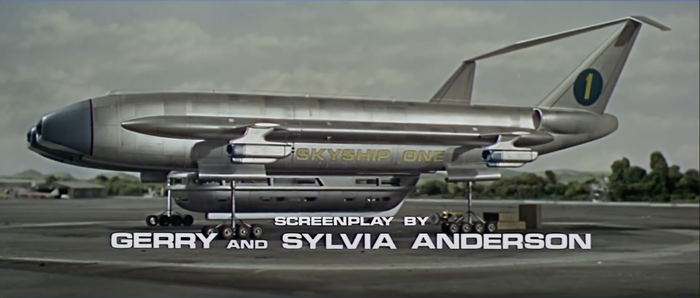

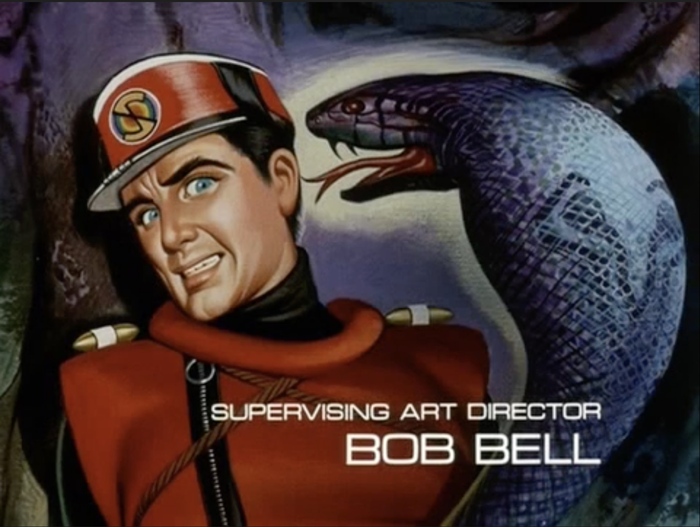

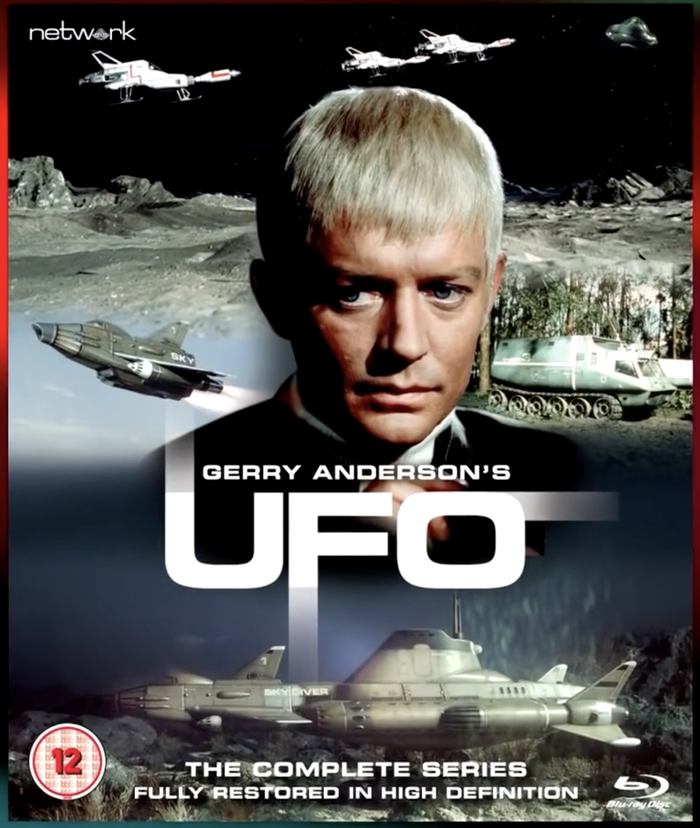


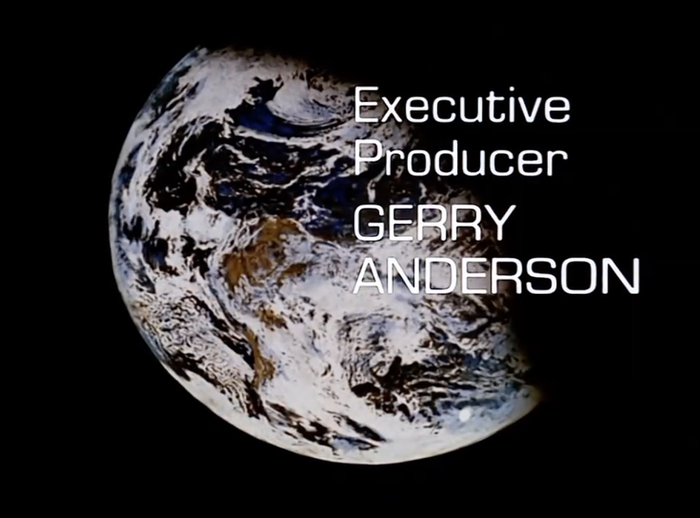





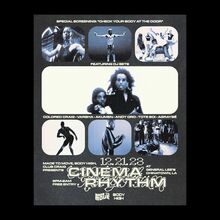

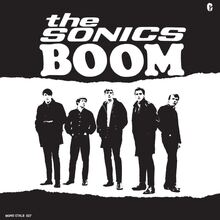














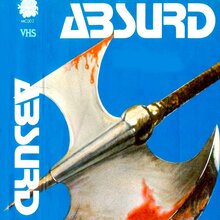




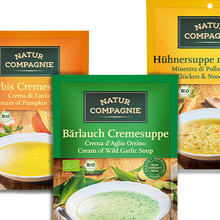














3 Comments on “Thunderbirds, Captain Scarlet, and UFO TV series”
This post inspired me to finally watch the feature film adaption of the UFO series (Invasion: UFO), which includes all the cool Eurostile props, but also has a great use of Amelia with hyperstylized laser-zoom-chrome effects and custom overline strokes for its opening title sequence:
On another related note, I couldn’t help but feel like I was in a full-scale Anderson set when flying from the KLM gates at the Bergen airport in Norway:
I’ve had “Captain Scarlet” in my mind over this past few days in view of my recent “Bananas For Breakfast” Blog post where I was reflecting on how I came to call the Fan Blog for Valérie Čižmárová by that name half-a-decade ago when I launched it and how things might have been different.
Approximately a year-and-a-half after “Bananas For Breakfast” had got up and running, therefore, somewhat late in the day, the alternate title for the Blog, “Slovakian Rhapsody”, with three inputs into it came to me, the first being that “Bohemian Rhapsody” was a big hit in the middle of the big decade for Valérie Čižmárová's recorded output, the second being that I have long thought of her as a sort of “Charlie’s Angel”, being a glamour girl of the Seventies and the third being that “Charlies Angels” was influenced by the “Angels” of “Captain Scarlet”, one of that number being Rhapsody Angel.
On looking around at “Captain Scarlet”-related material over this past couple of days I was struck by the font used for the titles and how similar it was to that used for “UFO”, so I thought I’d drop by this font use contribution again to back up my “Like” of some time ago with an actual comment.
It’s remarkable, looking at the imagined timeline of events related to “Captain Scarlet”, linked from the latest re-blogging at my “Girls Of The Golden East” Tumblr, that said Rhapsody Angel turned Minus Twenty-One just yesterday, so that was perfect timing!